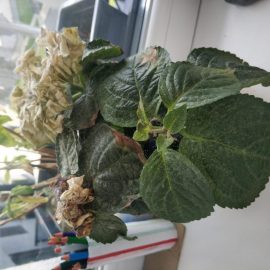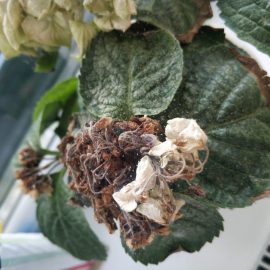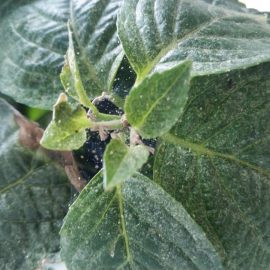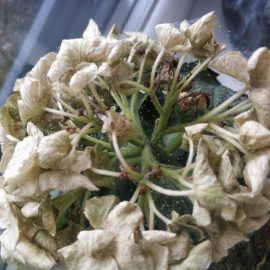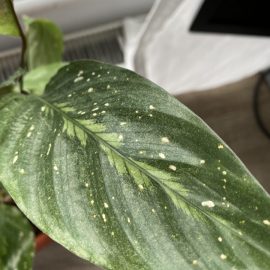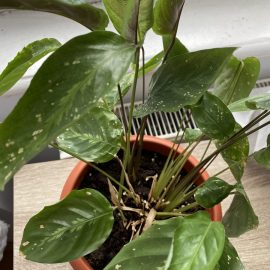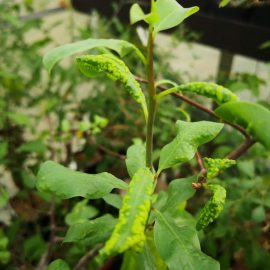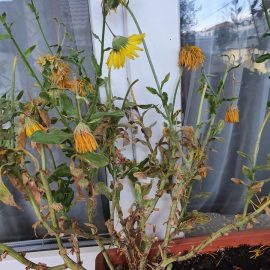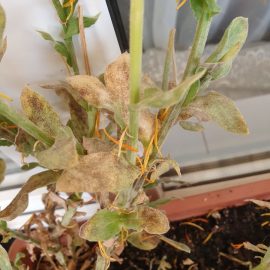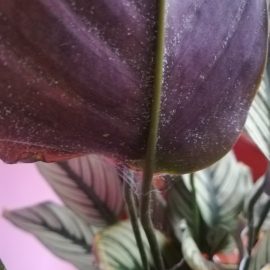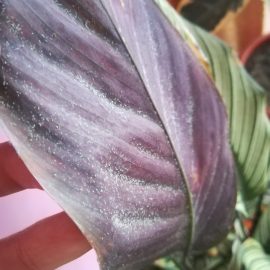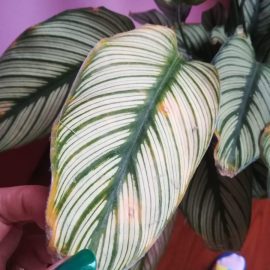Mites in ornamental plants – pest management
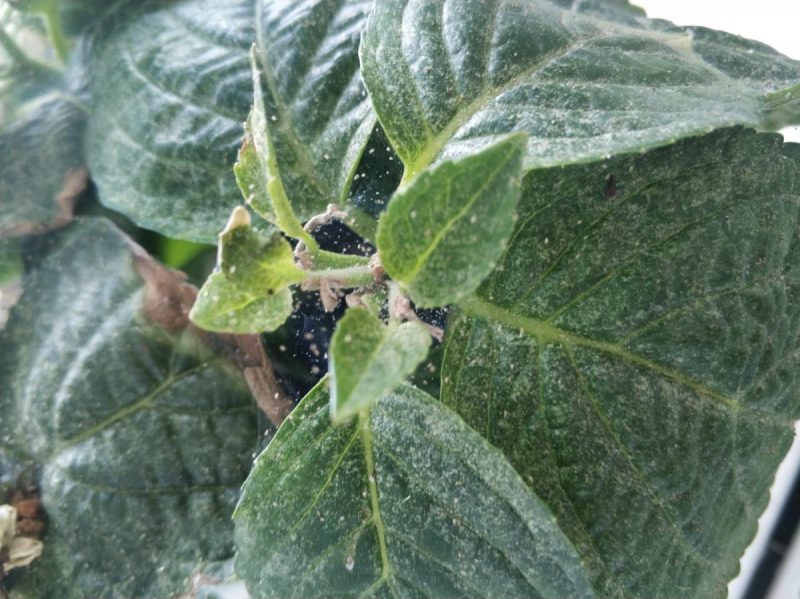
Mites or “spider mites” are species of pests that are part of the class Arachnida, along with larger spiders – the ones often found inside the house. They are difficult to see with the naked eye, measuring less than 1 mm. In ornamental plants, the most common species of mites are the red spider mite (Tetranychus urticae), the grape gall mite (Colomerus), the broad mite (Polyphagotarsonemus latus), etc.
Attack detection
Despite the very small size of the mites, the attack can be signaled by the presence of very fine webs woven on the leaves. Also, on the leaf limbs, there are punctiform discolorations. In time, the limbs acquire a silver-gray shade. In the case of the grape gall mite, galls appear on the plant leaves. Following the broad mite attack, the leaf edges become curved.
Mites are pests that feed on the plant’s intracellular fluid by stinging it and sucking the fluid.
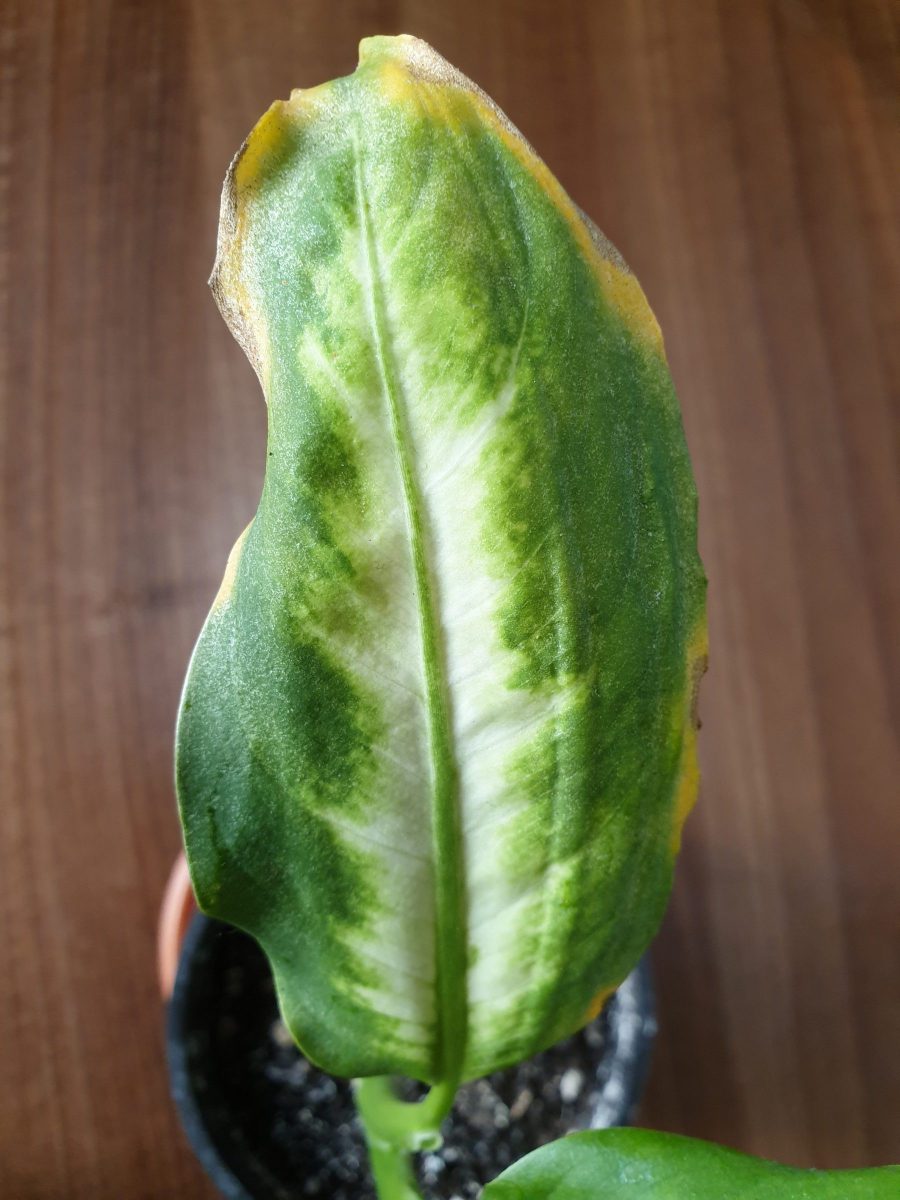
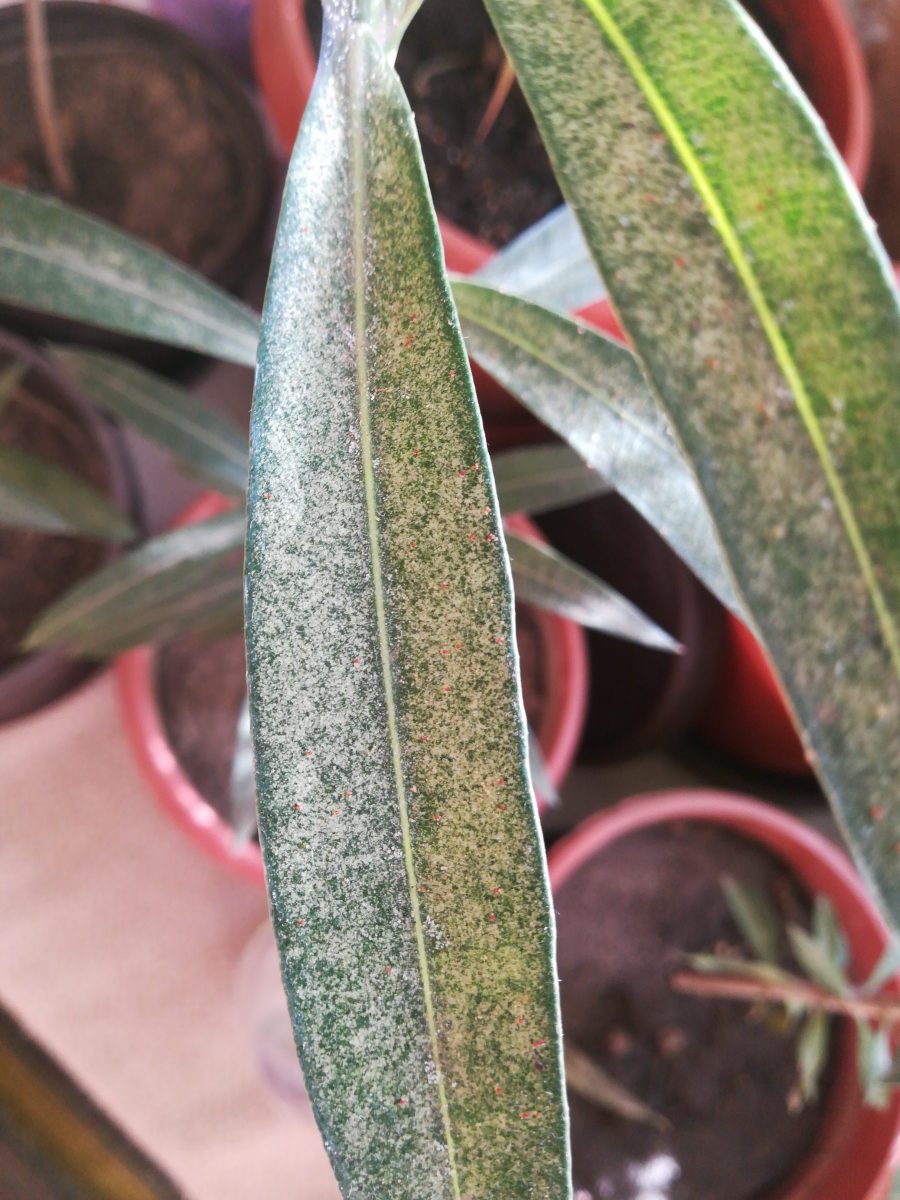
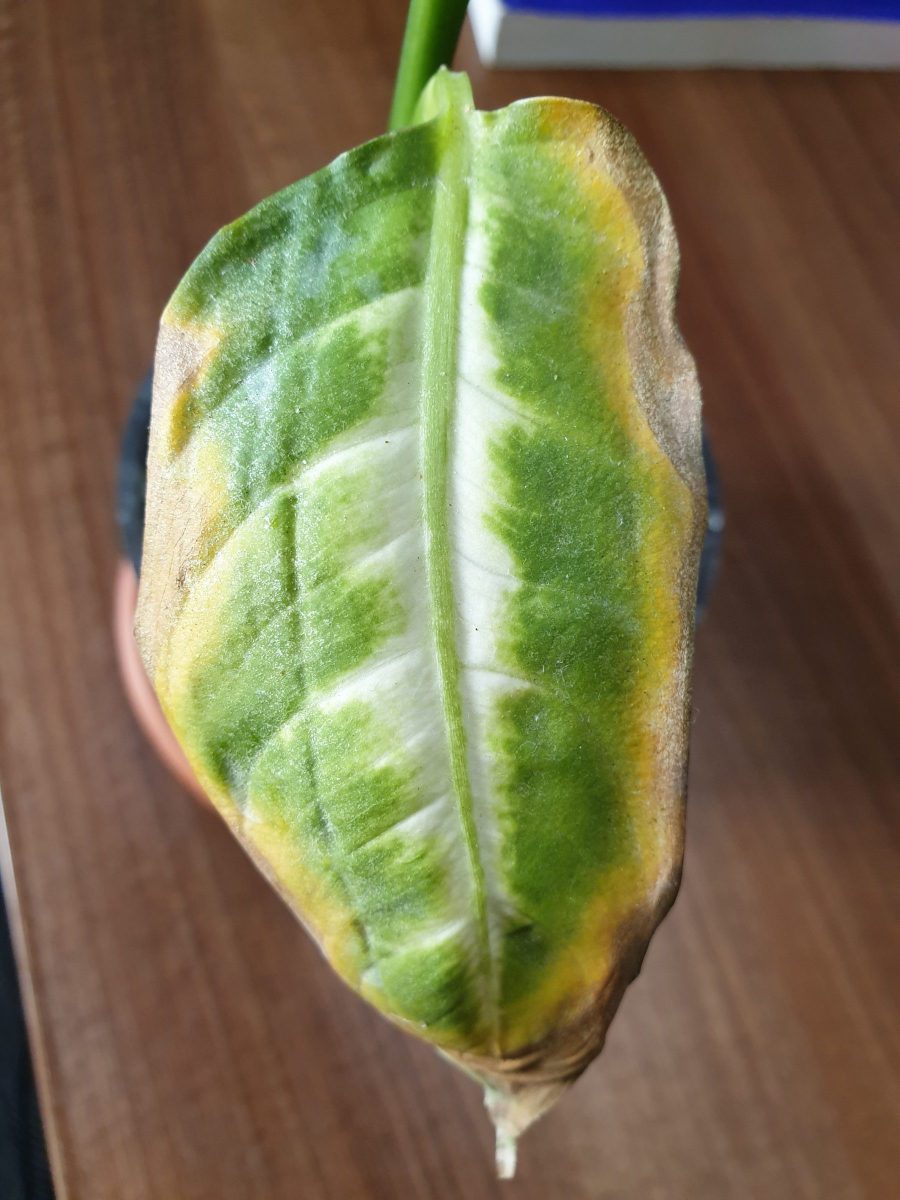
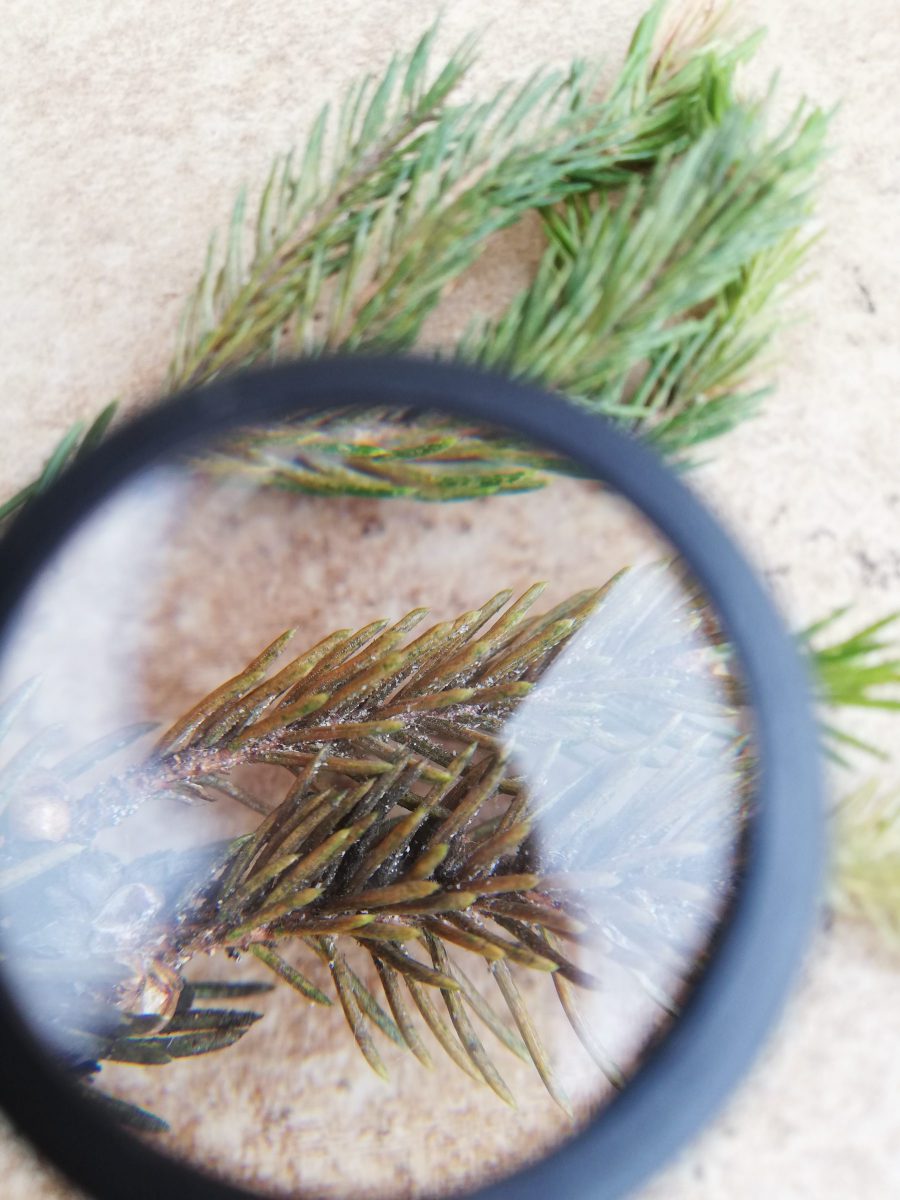
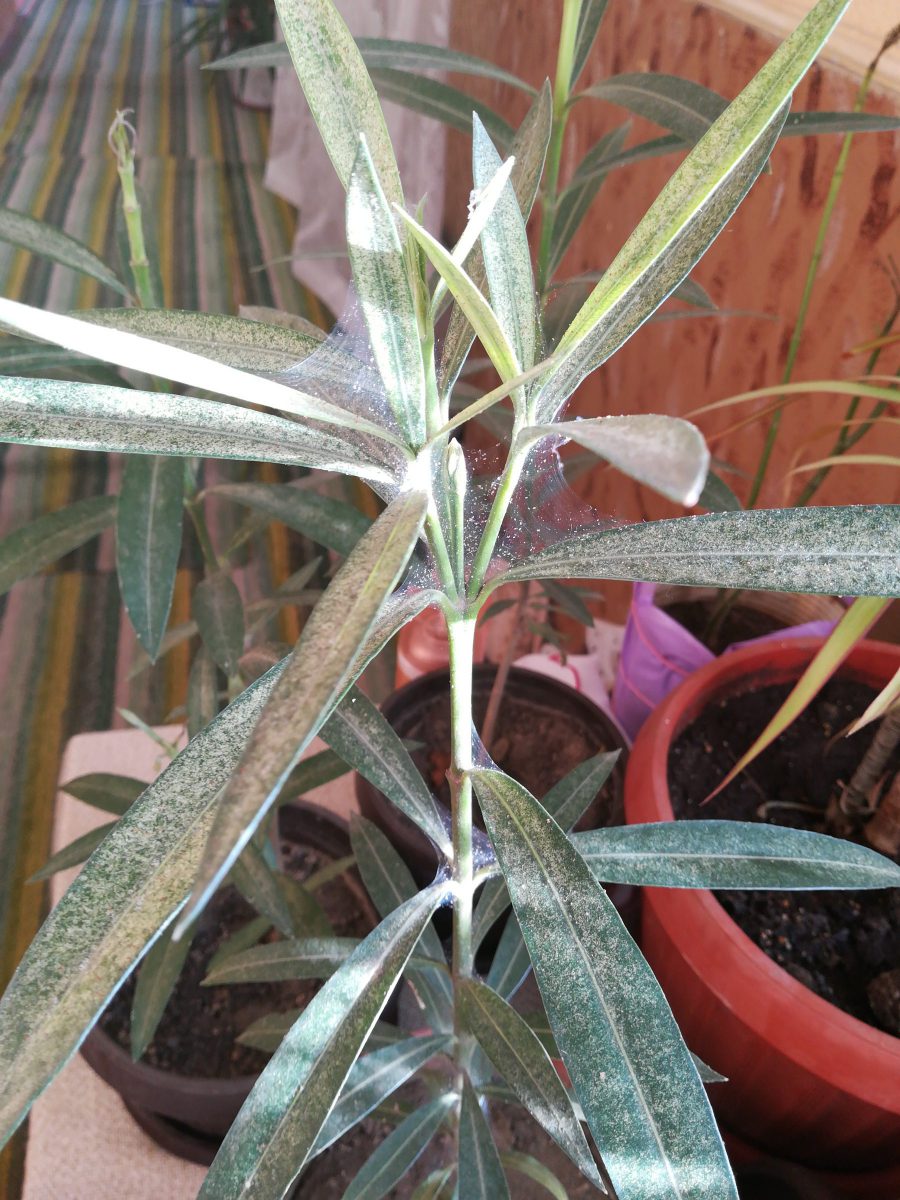
Attacked plants and damages
Mites are polyphagous, preferring many species of decorative plants (ornamental trees and shrubs, citrus, orchids, ficus, palms, cacti, green plants, etc.). They can attack all organs of the plant, including the bulbs (Amaryllis) or the flower buds. Following the attack, the affected plants begin to dry out, the flower buds turn black and fall, all this eventually leading to plant death.
At the same time, mites are among the most common pests that transmit many viruses to plants.
Prevention and control
Mites appear and develop most rapidly on plants during periods of drought or when the air is too dry in the apartment. In order to prevent their appearance, it is recommended to ensure adequate atmospheric humidity. This can be done by spraying the leaves regularly, depending on the species and its requirements.
Control is achieved by applying specific products. At the same time, by washing the foliage with the shower, at not very high pressure, you can reduce the number of individuals and keep the population under control, so the applied treatments will be more efficient.
Recommended products
-
You can find products on a different store
Change Store -
You can find products on a different store
Change Store -
You can find products on a different store
Change Store -
You can find products on a different store
Change Store -
You can find products on a different store
Change Store -
You can find products on a different store
Change Store -
You can find products on a different store
Change Store -
You can find products on a different store
Change Store -
You can find products on a different store
Change Store -
You can find products on a different store
Change Store -
You can find products on a different store
Change Store -
You can find products on a different store
Change Store -
You can find products on a different store
Change Store -
You can find products on a different store
Change Store -
You can find products on a different store
Change Store -
You can find products on a different store
Change Store -
You can find products on a different store
Change Store -
You can find products on a different store
Change Store -
You can find products on a different store
Change Store -
You can find products on a different store
Change Store -
You can find products on a different store
Change Store -
You can find products on a different store
Change Store -
You can find products on a different store
Change Store -
You can find products on a different store
Change Store
A few days after the end of the treatments, it is indicated to apply special fertilizers, in order to favor plant regeneration following the stress suffered.
Recommended products
-
You can find products on a different store
Change Store -
You can find products on a different store
Change Store -
You can find products on a different store
Change Store -
You can find products on a different store
Change Store -
You can find products on a different store
Change Store -
You can find products on a different store
Change Store -
You can find products on a different store
Change Store -
You can find products on a different store
Change Store -
You can find products on a different store
Change Store -
You can find products on a different store
Change Store -
You can find products on a different store
Change Store -
You can find products on a different store
Change Store -
You can find products on a different store
Change Store -
You can find products on a different store
Change Store -
You can find products on a different store
Change Store -
You can find products on a different store
Change Store -
You can find products on a different store
Change Store -
You can find products on a different store
Change Store -
You can find products on a different store
Change Store -
You can find products on a different store
Change Store -
You can find products on a different store
Change Store -
You can find products on a different store
Change Store -
You can find products on a different store
Change Store -
You can find products on a different store
Change Store
In addition:
- during the hot season, preventive treatments can also be carried out.
- to make the treatment more efficient, spray especially on the lower part of the leaves.
- it is recommended to isolate the affected plants before carrying out the treatments.
- caution! do not confuse mites (spiders mites) with the common spider (larger), which is not a plant pest. The webs woven by it are much larger, easily observable, compared to those woven by mites.














































































































































































































































































































































































































































